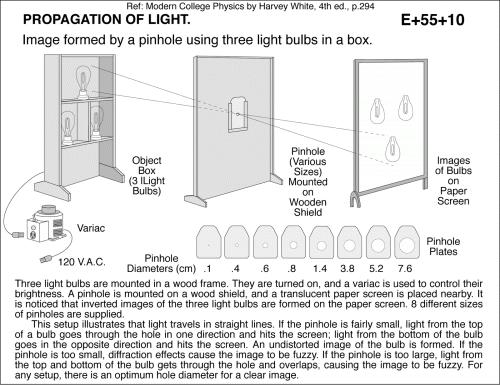Image formed by a pinhole using three light bulbs in a box.
Primary tabs
Three light bulbs are mounted in a wood frame. They are turned on, and a variac is used to control their brightness. A pinhole is mounted on a wood shield, and a translucent paper screen is placed nearby. It is noticed that inverted images of the three light bulbs are formed on the paper screen. 8 different sizes of pinholes are supplied. This setup illustrates that light travels in straight lines. If the pinhole is fairly small, light from the top of a bulb goes through the hole in one direction and hits the screen; light from the bottom of the bulb goes in the opposite direction and hits the screen. An undistorted image of the bulb is formed. If the pinhole is too small, diffraction effects cause the image to be fuzzy. If the pinhole is too large, light from the top and bottom of the bulb gets through the hole and overlaps, causing the image to be fuzzy. For any setup, there is an optimum hole diameter for a clear image. Image formed by a pinhole using three light bulbs in a box. Ref: Modern College Physics by Harvey White, 4th ed., p.294
UCB Index:
E+55+10
PIRA Index:
6A61.20
UCB Taxonomy:
PIRA Taxonomy:
Popularity:
- Log in to post comments

